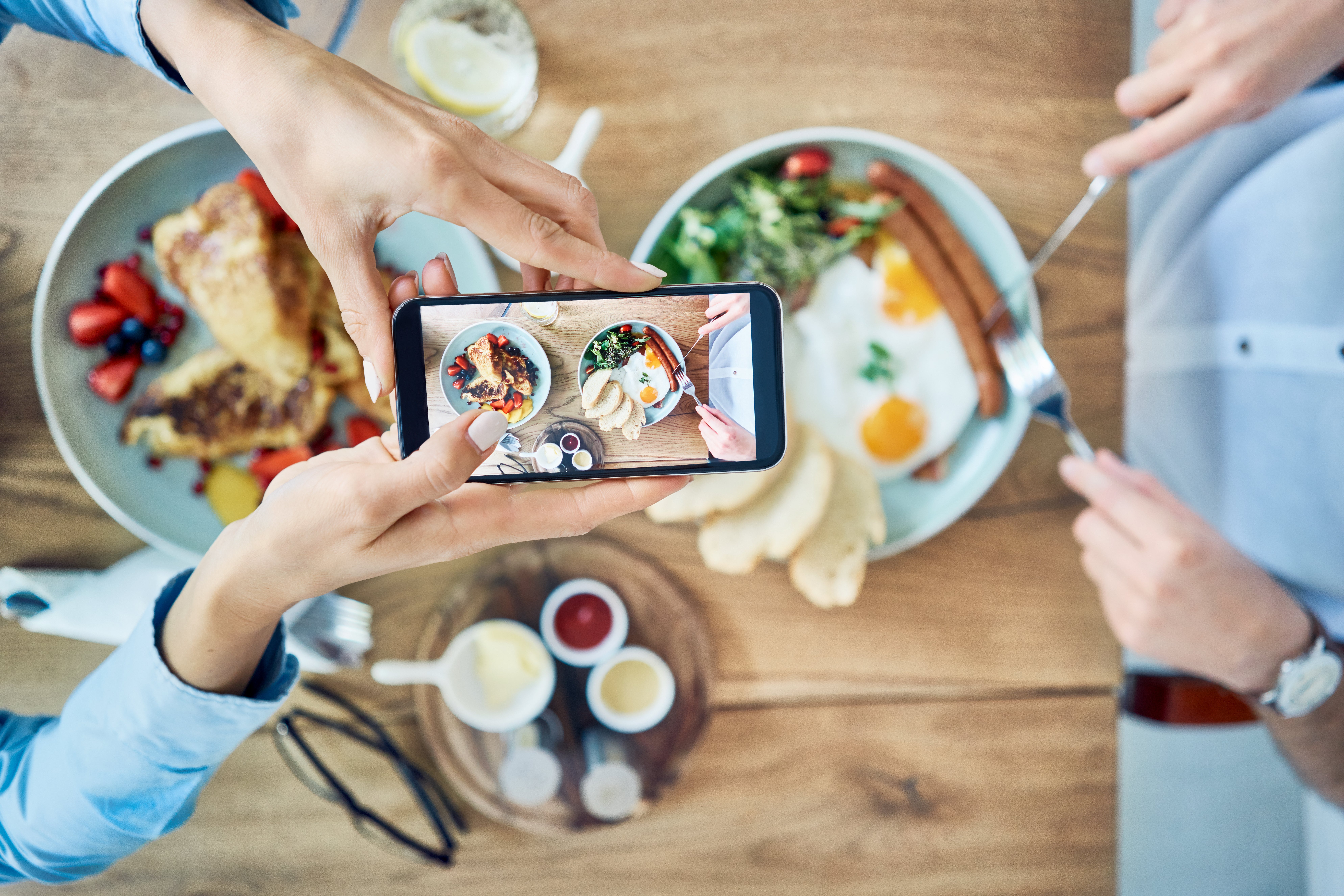From Salt Bae to Sketch’s toilets: How Instagram changed restaurants
From gold-leaf steaks to futuristic toilets, restaurants are scrambling to be the next big thing on Instagram. Molly Codyre looks at how the app has changed the way we dine out forever


Your support helps us to tell the story
From reproductive rights to climate change to Big Tech, The Independent is on the ground when the story is developing. Whether it's investigating the financials of Elon Musk's pro-Trump PAC or producing our latest documentary, 'The A Word', which shines a light on the American women fighting for reproductive rights, we know how important it is to parse out the facts from the messaging.
At such a critical moment in US history, we need reporters on the ground. Your donation allows us to keep sending journalists to speak to both sides of the story.
The Independent is trusted by Americans across the entire political spectrum. And unlike many other quality news outlets, we choose not to lock Americans out of our reporting and analysis with paywalls. We believe quality journalism should be available to everyone, paid for by those who can afford it.
Your support makes all the difference.From Salt Bae to Gloria’s monstrous lemon meringue pie, Sketch’s egg-shaped toilets to Bob Bob Ricard’s “press for champagne” button, Farm Girls’ acai bowls to Dominique Ansel’s cronuts, Instagram has made a celebrity of the food world. Whether it’s the grammable gravitas of the food itself, or the snap-worthy interiors, a new echelon of infamous restaurants have arisen in recent years thanks to the image-oriented social platform.
The formula was simple; pick a signature dish that would send tongues wagging when its photo inevitably cropped up all over Instagram, make it brightly coloured (or extravagantly decadent, in the case of early 2010s phenomenon “freakshakes”), add in a good photo spot – a floral wall, or a neon-clad sign – and you have all the makings of culinary virality.
You know the one – the restaurant that suddenly seems splashed all over your news feed. The bathroom selfie that becomes the photo du jour (until the next place opens, of course), the super-size-me plate of food that has diners grasping for their iPhones faster than a good sunset, the indulgent interiors that give Versaille a run for its money. All of this is good marketing – there is no faster way to fill bookings than the idea that a spot is the place to photograph and be photographed – but does the food match up to the facade?
A quick google search of “Instagrammable restaurants in London” produces numerous listicle-style results, each outlining the city’s most snap-friendly spots alongside their benefits; “go for its award-winning afternoon tea, camera at the ready,” reads one, “this is a content lover’s Insta-dream,” says another. It has to be said that some of these places do serve fundamentally good food. The Big Mamma Group, for all its tongue-in-cheek menu references (the Em Rata Burrata pizza pays homage to Instagram-famous model Emily Ratajowski) and more-is-more decor, leaves the gimmicks to one side when it comes to the food. What you get on the plates tastes as good as it looks in front of the camera.
Others, not so much. Many spots throughout the city centre seem to believe that their visual draws meant the menu could sit by the wayside, their Instagram geotags scarily scarce of anything close to a food photo. This never seemed to affect their popularity – until the recent pandemic, these places would be regularly booked out, the promise of a good pic drawing the crowds regardless. “You do see restaurants that were clearly built to hit that Instagram crowd,” says Tom Rogers, founder of Crab Communications and foodie Instagram Gourmet Guy. “I don’t see a problem in adapting your restaurant/cafe/shop concept to target what is a really important customer base, just as long as behind the facade is a great offering – good food, a passionate chef, a happy team, whatever drives the business.”
Another foodie Instagrammer, Kar-Shing Tong (better known as @ks_ate_here) regularly shares almost viscerally drool-worthy food photos with his 130,000 followers – the kind of pictures that define the concept “eating with your eyes”. He describes what he looks for in a restaurant as somewhere that is “doing something interesting or aspirational. It doesn’t have to be the most complex thing – I would much rather have something simple but it is done with a lot of heart and thoughtfulness.” In terms of recommendations, Tong has one golden rule of thumb: “Would I be happy spending my money here?” When I asked if he had noticed restaurants being developed for Instagram, Tong said “I have and I get it; but I don’t necessarily like it.” Adding that “food should always always be focused on the taste and nothing should come at the expense of that.”
One such restaurant group popular with the camera-clutching crowds is the parent company behind London’s Gloria and Circolo Popolare. “Instagram has never been a major factor,” says Victoria Lugger, co-founder of Big Mamma group, when I asked about whether photographability affects the way they design their restaurants. “We don’t take ourselves too seriously, and during the creation process we are constantly asking ourselves: is this fun? Does this make us laugh?” Perhaps it is this exact approach that sets the Big Mamma group apart from other places that gain popularity on social media – this fame has come as a byproduct of their design ethos, rather than being central to the plan in the first place. Their main priority, however, is still the food. “Our focus is staying true to our values. Highlighting our outstanding Italian producers, whether that is our burrata from Salvatore Montrone in Puglia, or 24-month-aged parmigiano reggiano from Paula Gennari. All our food is homemade, using creative ideas from our crazy chefs. That is what is important to us.”
Comparatively, The Ivy Group opened their second Ivy Asia outpost recently in London’s Chelsea. As extravagant and photogenic as its St Pauls counterpart, the opening drew criticism on now-deleted Instagram posts for the chain’s sweeping amalgamation of multiple Asian cultures and perpetuation of harmful and ultimately uninformed stereotypes. Whether it will remain as booked and busy as the original iteration remains to be seen, but it serves as a prime example of what can happen when a restaurant focuses on trying to attract that elusive social media fame. Owned by Caprice Holdings, the company is also responsible for other ’gram-friendly spots, including Sexy Fish and Brasserie of Light.
The opening of Salt Bae’s Nusr-Et steakhouse in London earlier this year seemed to perhaps most distinctively summarise this concept of food for social media. Almost as soon as the doors to the restaurant opened, social media was awash with two distinctly contrasting ideas; people sharing photos of exorbitant receipts (one widely-shared photo showed a meal totaling £1812.40, another amassed a meal of over £37,000, according to a receipt shared on Reddit) and people recording Salt Bae himself cutting meat, salting it with his now-infamous hand gesture and at times shovelling it into people’s mouths like some kind of glistening, sunglasses-clad torture machine. Reviews were resoundingly bad; Jimi Famurewa described it as “a vibeless business lounge of a room where mostly amateurish Frankie & Benny’s-level food is served at insultingly high prices”. Jay Rayner didn’t even bother to go inside, instead opting to take a kebab from Fulham’s Kebab Kid and eat it on a table outside the infamous Knightsbridge restaurant. Currently, the restaurant has 358 reviews on Google, and a 2.5 star rating.
“There are restaurants that have been purely created for the purposes of Instagram and you can tell really quickly,” says Rogers, “they have lighting that isn’t too yellow, or that avoids directly hitting table tops – the destroyer of the perfect flat lay – the layout of the space doesn’t flow and the most obvious indicator, the food and drinks lack real passion.” He adds, however, that this doesn’t always have to have an impact on a restaurant’s quality: “That’s not to say that some places haven’t done a really good job. You can tell the concept has been created to appeal to Instagram, but they’ve been thorough and created a really good food and beverage concept too.” Tong adds to this, saying, “Presentation is nothing new – people have been making food presentable for a long long time. Look at the old royal banquets!”
Instagram, however, is changing. The way users interact with the app is adapting. When influencer culture began to peak in 2017, there was still a strong focus on perfection – filters, high-quality photos, meticulously curated outfits – and building a perception that your life was wonderful. Now, the younger generation don’t feel the need to present themselves in such a false light. “Photo dumps” – the process of sharing multiple candid images from recent weeks in a carousel format – have gained increased traction as a sharing method. This is reflected in the stats, with software company Social Insider reporting that carousels receive the most engagement of any kind of post on the app – more than both videos and single images.
“Over the past year or so, there has been a distinct shift in the way we all use social media; at times it has been our only contact with the world outside our living rooms,” says Alice Schulz, social media manager at FEED social. This has accelerated how this kind of lo-fi content has grown in popularity – with all the accessories to a “perfect” life stripped away, people were forced to share in more real and authentic ways. The switch, inevitably, has had a knock-on effect on the restaurant and food worlds. Already it is impacting the ways in which these companies post on their own feeds. “I definitely feel restaurants are beginning to pull away from the corporate ‘perfect’ Instagram feed, where they post a pre-agreed, pre-shot image every day at the same time,” says Rogers. “A restaurant’s Instagram needs to have a personality now, it’s an extension of the place and team, rather than just an advertising board or clinical shop window.”
Will this chime the death bell for the physical photo-oriented restaurants though? “There will always be a place for restaurants like this,” says Alice, “they will follow the generations to different social platforms where their presence on social media is perhaps more important than the restaurant experience.” She adds, however, that “with a shift towards authenticity and ‘realness’ across all media, it feels as though the places that do focus on quality of the food and service have more hopes of longevity.” When I asked what he felt made a great restaurant, Tong said: “I see a restaurant as a three-circle Venn diagram of service, quality of food and price. That sweet spot where the three intersect is value and that to me is the perfect restaurant.”
Join our commenting forum
Join thought-provoking conversations, follow other Independent readers and see their replies
Comments